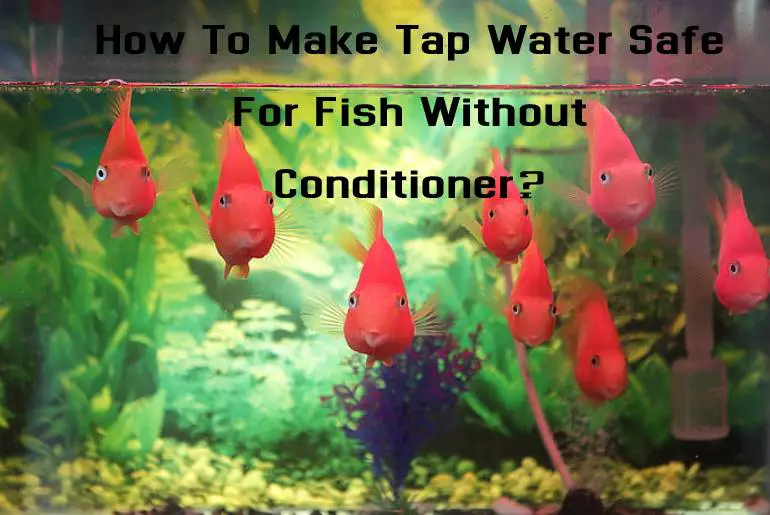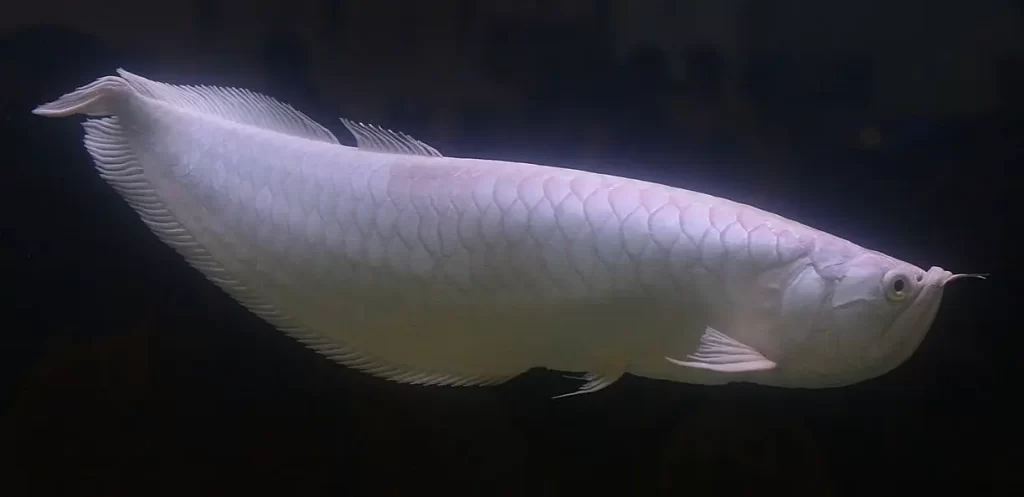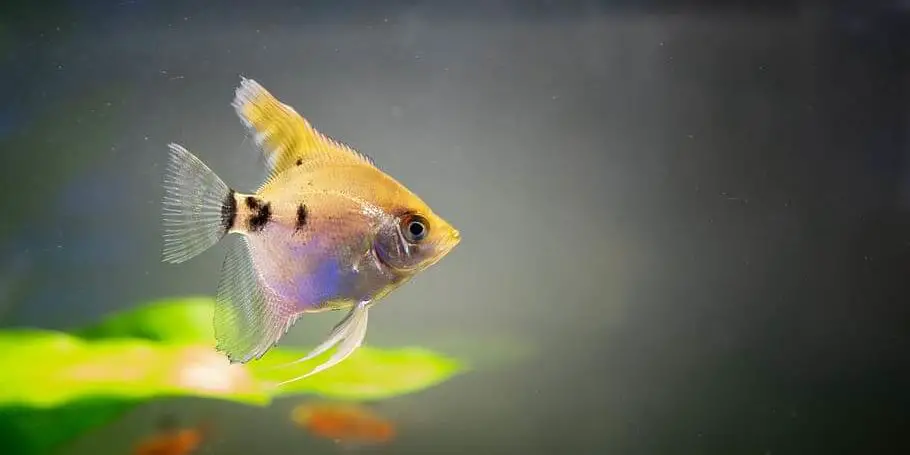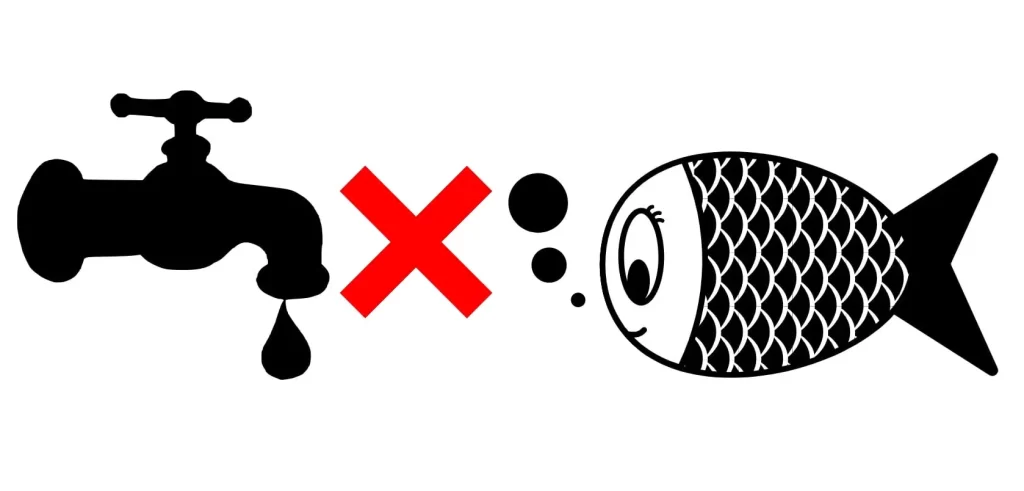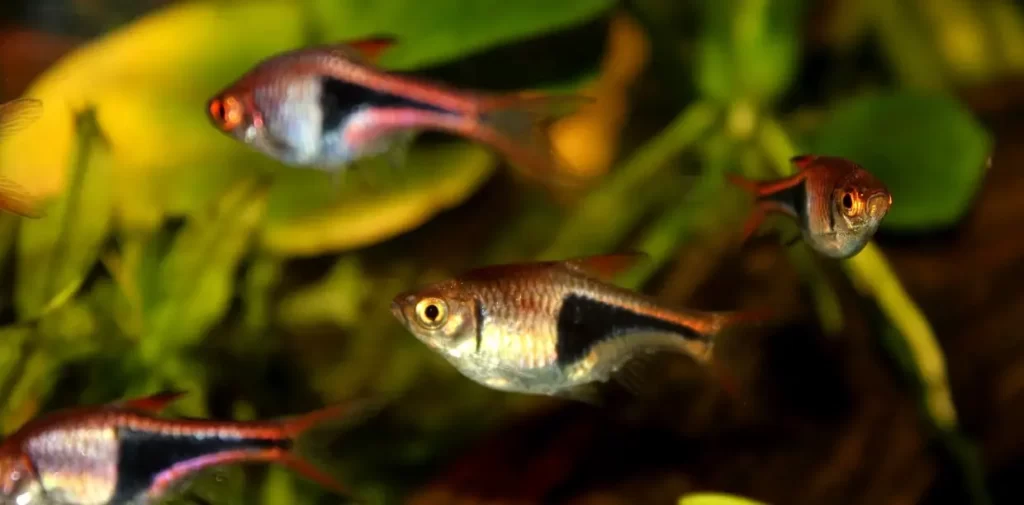People often search for the cheapest way to get things done for their aquarium. Sometimes, it goes the other way, however a few times it actually works out for the better. A water conditioner might not always be a good solution to solve the problem. So, let’s talk about how you can make tap water safe for your fish without using a conditioner?
Well, there are so many ways you can go while you make tap water safe for your fish. Reverse osmosis system, using UV light, or even vitamin C treatment can make tap water safe for your fish. However, these methods are quite over the top, so you can just let the water sit for a day or 2 or even boil the tap water to make it safe for fish.
I know these solutions will be rendering your mind and creating all types of weird and confusing scenarios.
But don’t you worry, I have a detailed article ready for you. This article will explain and help you understand every little detail about how to make tap water safe for fish without using any water conditioner.
Let’s Dive In, Shall we?
How To Make Tap Water Safe For Fish Without Conditioner?
I know how tiring and confusing it can get when you acquire the aquarium for the first time. Taking care of every small details is truly mind wrecking and I don’t blame you.
It is always same for everyone who is just a beginner. And they are bound to make some common beginner’s mistakes so don’t sweat about it.
But hey, don’t you worry I am here to help.
You might like to learn more about Why is Tap Water Not Safe For Fish? & How to Make It Safe?
Reverse Osmosis System Or Carbon Filter
Let me talk about one of the expensive yet easier ways to make tap water safe for fish without taking any help from the conditioners.
I am talking about the very popular method of making water chemical-free. And trust me you have heard about it while researching fishkeeping.
Well, it is none other than a Carbon filter, the one with activated carbon as the main component. Activated carbon works like a magic when using them in the tank filter.
They are known to absorb all the chemicals from the water and chlorine and chloramine are not any different.
Activated carbon will work its magic when the water passes through the filter during the filtration process.
Your water will be dechlorinated even with the chloramine gone when the filtration process is over. You can go for a reverse osmosis system too when it comes to filtration.
However, this one can be a little over the top expensive compared to your normal filter. But never doubt the effectiveness of this one.
These will remove the chlorine as well as chloramine but will produce a lot of waste water and I don’t think anyone will want that.
Reverse osmosis will also take up lots of time to make the water free from chlorine. Also, if the chlorine content is high, you might come across damaged parts of this system.
Changing or replacing these parts can be expensive and will make cost you a fortune whenever the chlorine level hits the peak.
LiquaGen-5-stage Reverse osmosis filter will help you solve the problem with making tap water safe for your fish.
Letting It Sit
The easiest to make tap water safe for your fish without involving any chemical product or conditioner is to let it be.
Without disturbing the water, you have to let it sit for 24 hours or more to make it chlorine-free.
You have to let it out in the open for 24 hours or so if you really don’t want to mess up the chemical composition of your tank water.
The amount or the level of chlorine present in the water determines the time you need to place the water in the open and let it sit undisturbed.
It is best to wait for a little longer than to take any risk. The chlorine will evaporate on its own once you leave the water undisturbed for a while.
To be honest, this is the cheapest way to make your tap water safe for the fish. There will be no extra expense except for the time it asks for.
But when we are talking about tap water with chloramine too, then it is necessary to take a different approach too.
Chloramine isn’t air soluble so it will remain as the residue even when you leave tap water to sit for a longer time.
However, the chlorine in the water will easily evaporate into the air once you let it sit for 24 hours or more.
The evaporation will take less than or nearly 20 hours when you let the water sit in the sunlight and a wide container.
A narrower container and absence of sunlight will make it hard for chlorine to get dissolved in the air.
You might like to know more about Freshwater Aquarium Equipment Checklist : Aquarium Supplies You Need
Boiling Water
Let us talk about the easiest approach, shall we? I know most experts recommend drinking water after boiling it properly to humans as well.
This might seem like a pull and a joke mostly but boiling the tap water makes it safe for fish and it’s a fact.
Let me elaborate for you. When you boil the tap water, you provide enough heat and the boiling will bring in aeration into the water.
This aeration and the heat will easily remove the chlorine from the water and evaporate it into the air.
And trust me this process won’t even ask for much of your time or money. This cheapest and the easiest way to dechlorinate or make the water safe for your fish will only take 20 minutes of your time.
However, remember to let the water cool down properly and the temperature to reach ideal for your fish.
Hot boiling water will burn your fish and I think you know the pain of hot water sliding down your body.
The beneficial part of boiling the tap water process is this one will even remove the chloramine from it.
Can you imagine killing two birds with one stone? This is an amazingly easy way to make tap water safe for your fish.
With no chemical usage or any other means, you will easily clean the water and make it safe for your fish in less than an hour.
But make sure to calculate the exact amount of water you need for your tank or during the water change and measure the boiled water too.
So, cheers to the cheapest, easiest, and fastest way to naturally make tap water safe for your fish.
Vitamin C Treatment
Now, let talk about another home remedy again. Have you ever thought about using lemon or vinegar in the tank?
Well, to be honest, I was always curious about feeding fish lemon (don’t do this, this will fluctuate the pH. of the tank, trust me I have tried this).
You can actually remove chlorine as well as chloramine using vitamin C. But using lemon or any other citric food will not do the job.
You have to go and purchase ascorbic acid that comes especially for use on fish tanks. Don’t pour this on the fish tank though.
Pour a teaspoon of ascorbic acid on each gallon of tap water you are planning to use. Remember to test the pH. of water before pouring it into the tank.
Learn more about How to Adjust pH in Fish Tank – Fishkeeping Guide
You can test the water parameters such as ammonia, nitrite, nitrate level along with the chlorine content and pH using API Master Freshwater Test Kit.
Using Ultraviolet Light
Now let us talk about purchasing a UV sterilizer. These sterilizers are not even expensive to make you sweat while purchasing them for your tank.
When you bombard the tap water with UV rays, the reaction occurs and the chlorine in the water will be removed after a while.
This works with the same mechanism as the sunlight and heat do to the tap water. The best thing about UV sterilizers is they will remove both chlorine and chloramine from the tap water.
You will not have to worry about the effectiveness of the UV sterilizer and you can even use it directly in the tank.
Does Tap Water Contain Chlorine?
Yes, tap water does contain chlorine. I know this may sound absurd to you as you are used to using tap water for daily chores.
However, the case is different for humans and fish. You may not be able to tell the chlorine content in the water but your fish can surely do.
Chlorine can be highly toxic and harmful for fish, bringing in all the chaos. Let me elaborate on that for you and explain why tap water even has chlorine in it.
Tap water is basically for the household chores that human beings have in their daily life. So, we can’t risk having water-borne diseases just because we use contaminated water.
Chlorine is voluntarily added to the tap water to make it bacteria-free or to remove harmful bacteria that might cause water-borne diseases in humans.
So, yes, tap water does contain chlorine as the water supplier voluntarily and knowingly adds chlorine to the water.
E.coli and the norovirus can be real disasters causing factors bringing health hazards to humans.
However, chlorine acts as a savior and kills these bacteria before they can harm your health.
You can sometimes feel the pungent smell from the tap water if your house or the water you are using is nearer to the public water source.
The concentration of chlorine is, however, very minuscule or small. You are only dealing with 0.2 to 1 ml of chlorine per liter of water as the usage of chlorine is for the disinfectant purpose only.
You might be interested to learn more about How Long Does Chlorine Stay In Water?
Is Tap Water Bad For Your Fish?
Well, this depends. I can neither tap water is bad nor can I assure it being safe for your fish as well.
To be honest, the level of chlorine and other few water contents decide whether tap water is safe for your fish or not.
Most of the time, chlorine is the main villain when it comes to using tap water for your fish. If you truly want to use tap water in the tank, make sure to apply the necessary measures.
Tap water is bad for your fish until and unless it contains a high level or even a tiny hint of chlorine.
Otherwise, if you are able to get zero reading during chlorine or chloramine test as well as other harmful impurities, tap water is your savior for life.
It is the cheapest and easiest way to decide what water you are going to use in the fish tank.
But remember to test it before you use. And if you find any chlorine or other impurities, make sure to take necessary measures.
You might like to read in detail about Why is Tap Water Not Safe For Fish? & How to Make It Safe?
Frequently Asked Questions
I know, to make tap water safe for your fish without conditioner is not the only thing that runs in your mind. So, I tried to answer some of the FAQs that people generally ask while researching about tap water.
Is Bottled Water Safe For Fish?
Most people have a wrong idea about the bottled water being safe for fish. Truly, No, bottled water is not safe for your fish no matter what other people say.
People develop a perception of tap water being safe for their fish as it is safe for human use. But this is wrong on so many levels.
Firstly, you may know, bottled water contains a high amount of chlorine which is basically used to make water safe for humans.
Chlorine is undeniably bad for your fish. So, water in a bottle will automatically be a curse if you add it to the fish tank.
Next, the minerals that fish may require during their lifetime and can only obtain from the water they reside in will be most probably absent from the bottled water.
So, can you see the problem here? It is quite necessary to look at the water contents even if you assume it as safe for humans.
Not everything safe for human beings is safe for your fish. There are so many examples of this if you look closely and research well.
What Kind Of Water Is Best For Fish?
Well, I am not sure if I will be able to exactly point you in the right direction when I talk about the types or kind of water your fish prefer.
But I can assure you if you meet the ideal water condition your fish ask for, you will be able to make any water appropriate for your fish.
First of all, make sure the water you are going to use in your fish tank doesn’t contain any hint of chlorine or chloramine.
If you are using tap water, which is best for your fish, let it sit for a day or 2. This will help to make sure it contains zero amount of chlorine or chlorine substitutes.
Next up we have ammonia and nitrite. The presence of these two nitrogen compounds in the fish tank will invite ammonia poisoning and nitrite intoxication in fish respectively.
You might to read more about How To Lower Ammonia In An Aquarium? Cause And Effect Of Increased Ammonia
So, you see, you have to test water for ammonia and nitrite and make sure you get rid of every little hint of these compounds from the water before using it in the fish tank.
Learn more about How To Lower Nitrite In An Aquarium? Cause And Effect Of Increased Nitrite
Let the aquarium water cycle properly for a few weeks before you add any fish to the tank. The matured tank will have adequate growth of beneficial bacteria in the aquarium that will perform an aquarium nitrogen cycle to convert toxic ammonia to essential nitrate.
There are so many ways to make water safe for your fish and many types of water you can use. But, I recommend you to use tap water but only after a thorough examination and testing.
Conclusion
In conclusion, sometimes there are simpler and sustainable ways to solve problems but you have to know where to look. The most tiring and crucial thing about fishkeeping is choosing the best water for your fish. If you are unable to provide the best quality of water to an aquatic being, then my friend this is where the problem starts.
You can go for tap water which can be cheaper and more reliable if you know how to make it safe for your fish. And well, you already know, it is no rocket science to make tap water safe for your fish without using any water conditioner. Just some simple changes or a little bit of patience from your side will do its job.
I hope you make sure everything in the fish tank including the condition of tap water is balanced and has met the ideal requirements.
You will do a great job if you follow my instructions carefully. There are so many ways to make tap water safe for your fish. Just choose one that is efficient and easier for you.
Good luck!!!
Happy Fishkeeping!!!

